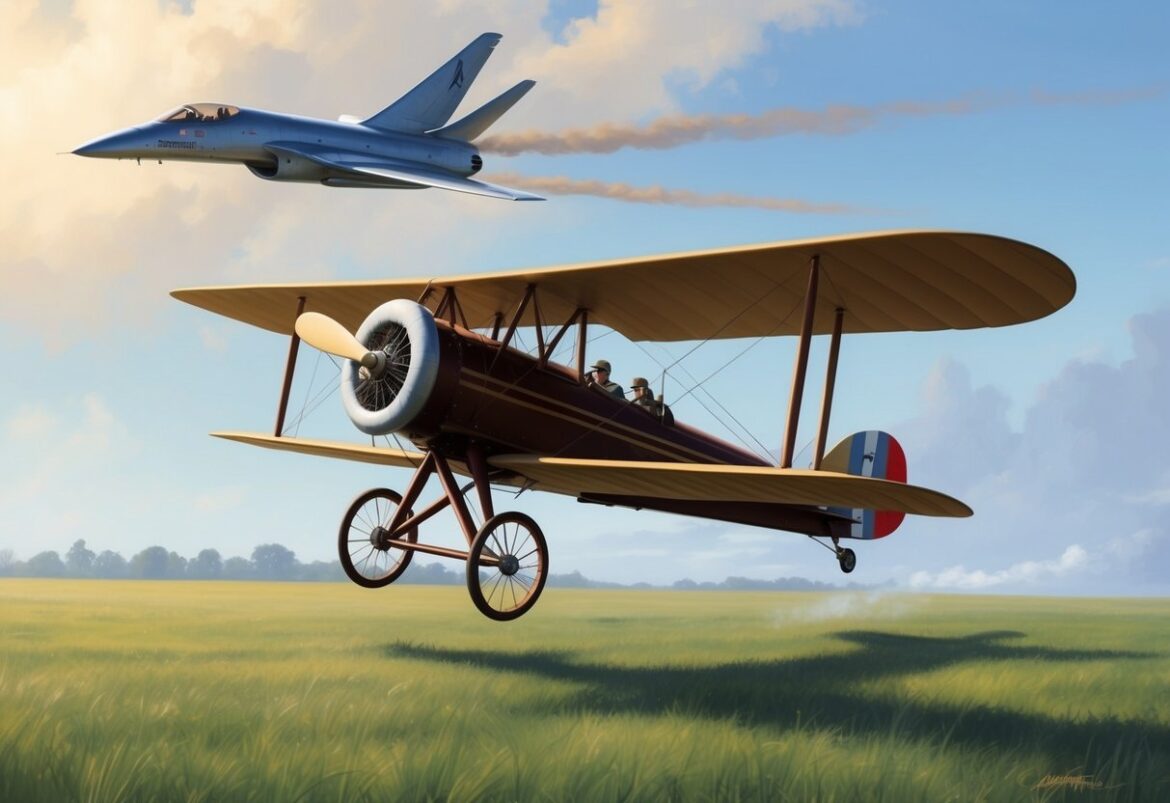Table of Contents
Aviation has come a long way since the first powered flight by the Wright brothers in 1903. From simple wood and fabric planes to sleek jets crossing oceans, the progress has been amazing. The evolution of aviation has changed how we travel, do business, and see the world.

Planes got bigger, faster, and safer over time. New materials like aluminum made aircraft lighter and stronger. Jet engines let planes fly higher and farther than ever before. Today’s planes use advanced computers to fly more efficiently.
Aviation isn’t just about passenger travel. Cargo planes move goods around the globe quickly. Military aircraft protect nations and respond to crises. Space shuttles even took flight beyond Earth’s atmosphere. As technology improves, the future of flight looks bright.
Summary
- Aviation evolved from simple propeller planes to advanced jets in just over a century
- Aircraft improvements in size, speed and efficiency transformed global travel and commerce
- Ongoing innovations in aerospace technology continue to shape the future of flight
Dreams of Flight: Early Concepts
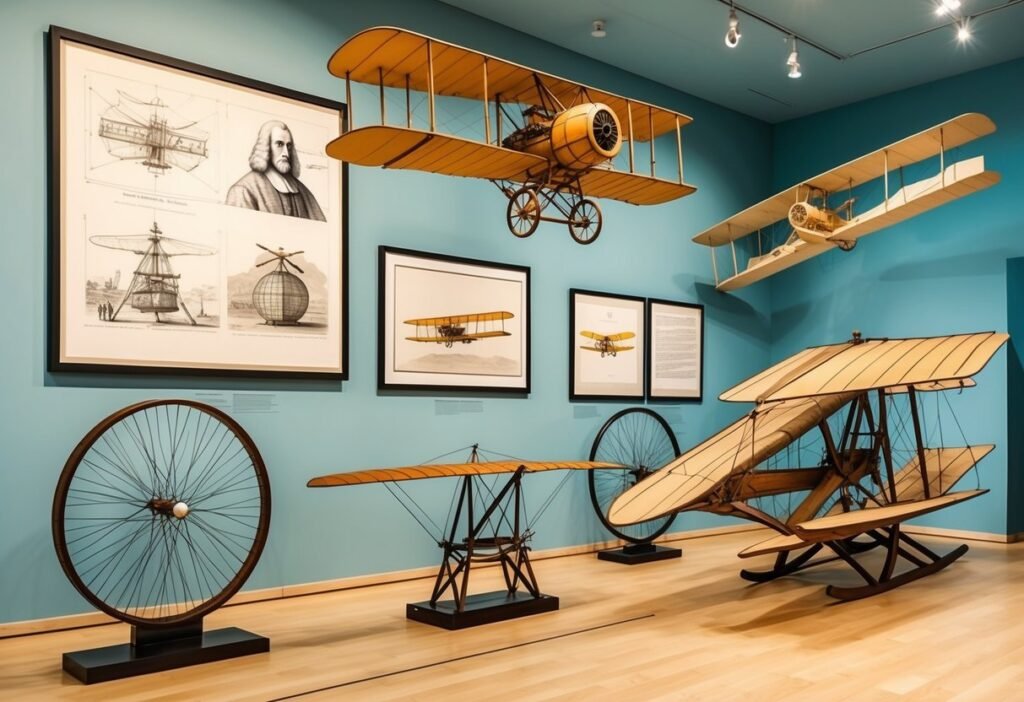
For a very long time, people have wished they could fly like birds. Imagine looking up at the sky and seeing an eagle soaring high above. Wouldn’t it be amazing to join them?
Many years ago, some brave (but not very smart) people even tried jumping off cliffs with homemade wings! Of course, that didn’t work out well.
But this dream of flying didn’t go away. Smart inventors came up with lots of cool ideas to help humans get off the ground. They made drawings of flying machines and tried building different things to lift people into the air.
These early ideas were really important. Even though most of them didn’t work, they helped other inventors learn what might work. It’s like they were building steps that led to the airplanes we have today.
These first dreamers and inventors were the beginning of a big adventure. Their work helped make it possible for people to fly all around the world, just like we do now!
Montgolfier Brothers and the Balloon
The Montgolfier brothers made a huge breakthrough in the dream of flight in 1783. They created the first successful hot air balloon. Their invention lifted people into the air for the first time.
The brothers used a large silk bag filled with hot smoke from a fire. This made the balloon rise. On November 21, 1783, the first manned flight took place in Paris. It lasted 25 minutes and covered 5.5 miles.
This achievement sparked huge public interest in aviation. It proved human flight was possible. Balloons soon became popular for both science and entertainment.
Leonardo da Vinci’s Flying Machines
Leonardo da Vinci was fascinated by flight centuries earlier. He studied birds and bats to understand how they flew. This led him to design several flying machines in the late 15th century.
His most famous design was the ornithopter. It had flapping wings like a bird. While it never flew, the idea was groundbreaking. Da Vinci also sketched plans for a helicopter-like “aerial screw” and a glider.
Though his designs weren’t built in his lifetime, they showed amazing foresight. Da Vinci’s work inspired later aviators and engineers. His ideas helped pave the way for modern aircraft design.
The Birth of Aviation: 18th to 19th Century
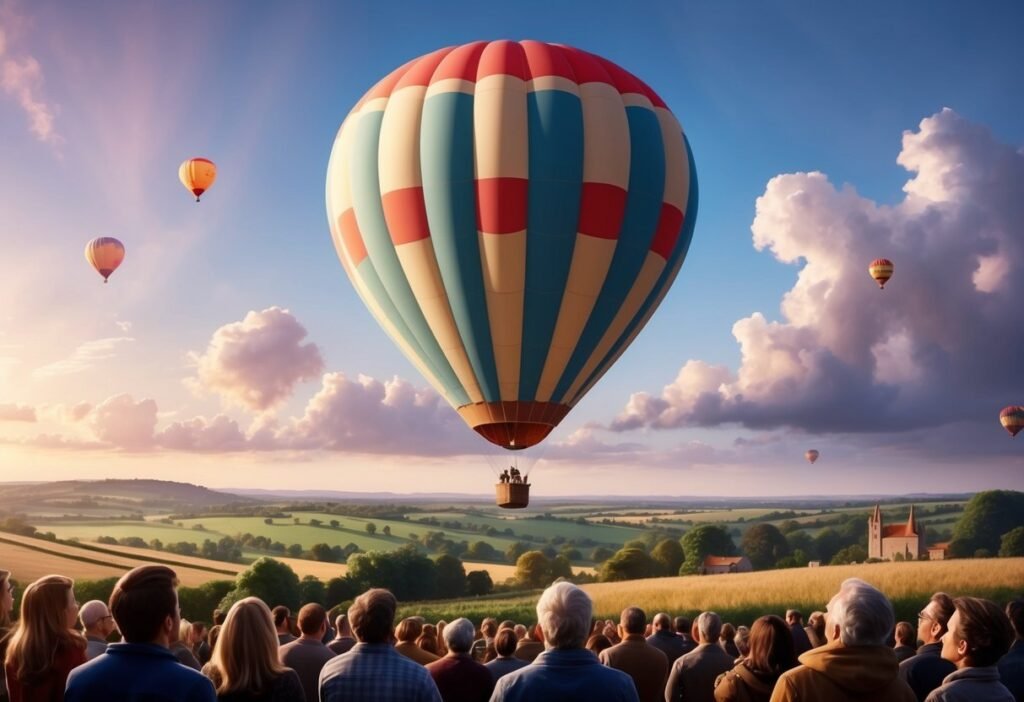
The birth of aviation saw major breakthroughs in flight technology. Inventors and scientists made key discoveries about aerodynamics and created new flying machines.
Early Flight Experiments
In the late 18th century, people started trying to fly in earnest. They built kites and attempted tower jumping. Some even designed flying machines.
Leonardo da Vinci drew plans for an ornithopter. This was a device that flapped wings like a bird. Though it never flew, it sparked ideas in others.
Sir George Cayley made big strides in flight theory. He figured out the forces that act on a flying object. His work laid the foundation for future aircraft design.
Advancements in Balloon Flight
The Montgolfier brothers made history in 1783. They launched the first manned hot air balloon in France. This marked the start of human flight.
Balloon technology improved quickly. Gas balloons replaced hot air ones. They could fly higher and longer.
Jean-Pierre Blanchard and John Jeffries flew across the English Channel in 1785. This was the first international flight.
Balloons were used for military purposes too. The French army used them for reconnaissance in 1794. This showed the potential of aerial vehicles in warfare.
Wright Brothers and the First Flight
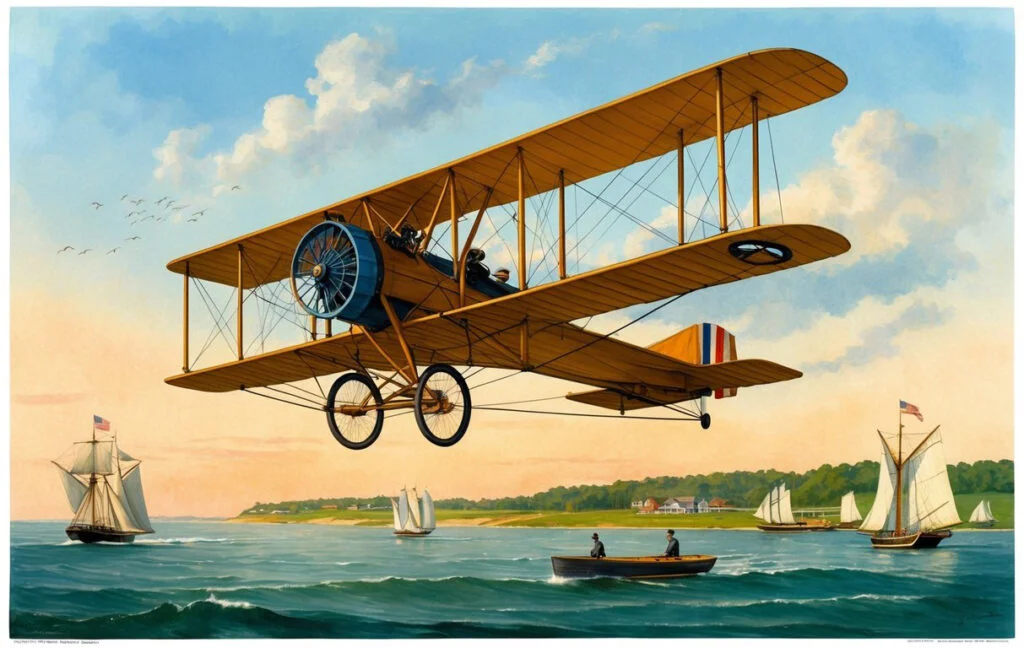
The Wright brothers made history with the first controlled, sustained flight of a powered aircraft. Their groundbreaking achievement revolutionized transportation and sparked the age of aviation.
Developing the First Aircraft
Wilbur and Orville Wright began experimenting with flight in the late 1890s. They studied bird wings and built kites to test their ideas. The brothers created a wind tunnel to test wing shapes.
In 1903, they built the Wright Flyer. It had a wooden frame covered in fabric. The plane had two propellers and a 12-horsepower engine.
Key features of the Wright Flyer:
- Wingspan: 40 feet 4 inches
- Weight: 750 pounds
- Engine: 4-cylinder, 12-horsepower
- Propellers: Two counter-rotating wooden propellers
The Wright brothers’ unique design included wing-warping for roll control. This was a major advance in aircraft control.
Wright Flyer at Kitty Hawk
On December 17, 1903, the Wright brothers made history at Kitty Hawk, North Carolina. They achieved the first controlled, sustained flight of a powered aircraft.
Orville piloted the first flight. It lasted 12 seconds and covered 120 feet. The brothers made four flights that day. The longest, by Wilbur, lasted 59 seconds and covered 852 feet.
The Wright Flyer’s success proved that powered flight was possible. It marked the beginning of the aviation era. The aircraft’s innovative design influenced future planes.
The Wright brothers continued to improve their designs. By 1905, they had built a practical aircraft capable of extended flight.
Expansion of Aviation: Post-Wright Era

After the Wright brothers’ breakthrough, aviation progressed rapidly. New aircraft designs emerged for military and commercial use. Technological advances improved speed, range, and safety.
First Military Aircraft
The military quickly saw the potential of aircraft. In 1909, the U.S. Army bought its first airplane from the Wright brothers. This sparked a race to develop better military planes.
During World War I, aircraft roles expanded. Planes were used for reconnaissance, bombing, and aerial combat. Fighter planes like the Fokker Dr.I became famous.
By World War II, military aviation had advanced significantly. Faster, more powerful aircraft like the Spitfire and P-51 Mustang played crucial roles in combat.
Advent of Commercial Aviation
Commercial aviation began in the 1920s. Early airlines used small propeller planes for mail and passenger service.
The introduction of larger aircraft in the 1930s, like the DC-3, made air travel more practical. These planes could fly longer distances and carry more passengers.
After World War II, commercial aviation expanded rapidly. New routes connected major cities worldwide. Airports were built to handle increased air traffic.
The jet age began in the 1950s. Planes like the Boeing 707 revolutionized air travel. They flew faster and farther, making long-distance flights more comfortable and efficient.
Technological Advances in Aircraft Design

Aircraft design has seen major improvements over the years. These advances have made planes faster, more efficient, and safer.
Improvements in Engine Technology
Engine technology has come a long way since the early days of aviation. The first planes used simple piston engines. Today, most large planes use jet engines.
Jet engines are much more powerful than piston engines. They allow planes to fly higher and faster. Modern jet engines are also more fuel-efficient.
New materials have made engines lighter and stronger. This helps planes use less fuel. Some new engine designs, like geared turbofans, are even more efficient.
Evolution of Aerodynamics
Plane shapes have changed a lot to improve aerodynamics. Early planes had boxy shapes with lots of drag. Now, planes have smoother curves to cut through the air better.
Wings have seen big changes too. They’re longer and thinner now. This reduces drag and helps planes use less fuel. Some new designs use special wing shapes to reduce noise.
Computer modeling has helped a lot with aerodynamics. Engineers can test new designs without building full-size planes. This makes it easier to try new ideas.
New aircraft designs are focusing on being more eco-friendly. Some use unusual shapes to save even more fuel. These could be the planes of the future.
Milestones in Aviation: Transatlantic and Beyond

Aviation history is marked by daring flights and revolutionary technologies. Two key milestones shaped the future of air travel: the first solo transatlantic flight and the development of jet engines.
Lindbergh’s Historic Transatlantic Flight
In 1927, Charles Lindbergh made history with the first solo nonstop transatlantic flight. He flew from New York to Paris in 33.5 hours, covering 3,600 miles. Lindbergh’s plane, the Spirit of St. Louis, was a custom-built single-engine aircraft.
This feat captured the world’s imagination and proved long-distance air travel was possible. It opened up new possibilities for aviation and inspired future generations of pilots.
Lindbergh’s flight also highlighted the need for better navigation tools and more reliable aircraft. It paved the way for regular transatlantic air service in the following decades.
The Jet Engine Revolution
Jet engines transformed aviation in the mid-20th century. They allowed for faster, higher-altitude flights and greater fuel efficiency compared to propeller engines.
The first jet-powered aircraft flew in 1939, but widespread use came after World War II. In 1952, the de Havilland Comet became the first jet airliner in regular service.
Jet engines made transatlantic flights much quicker and more comfortable. The Boeing 707, introduced in 1958, could cross the Atlantic in just 7 hours. This was a huge improvement over propeller planes, which took nearly twice as long.
Today, jet engines power most commercial and military aircraft. They continue to evolve, becoming more efficient and environmentally friendly.
Boeing and the Airliner Evolution

Boeing played a key role in transforming air travel. The company’s innovations improved both the experience and safety of flying.
The Boeing 707 and Air Travel
The Boeing 707 changed how we fly. Introduced in 1958, it was America’s first jet airliner. The 707 made long-distance travel faster and more comfortable.
Its swept-wing design and powerful engines allowed for higher speeds. This cut flight times significantly. The 707 could cross the Atlantic with just one stop.
The plane’s success led to a boom in air travel. More people than ever could afford to fly. Airlines expanded their routes and fleets.
Boeing’s 707 set new standards for the industry. It paved the way for future jet airliners. The design influenced many later models.
Advances in Passenger Comfort and Safety
Boeing continually improved its aircraft designs. Each new model brought enhancements in comfort and safety.
Wider cabins allowed for more spacious seating. Better air circulation systems improved cabin air quality. Larger windows gave passengers better views.
Safety features evolved too. Boeing introduced:
- Stronger airframes
- More reliable engines
- Advanced navigation systems
- Improved emergency equipment
These changes made flying safer and more pleasant. Accident rates dropped as technology advanced.
Boeing also focused on reducing noise and fuel consumption. This made air travel more environmentally friendly and cost-effective.
Civil and Military Aviation Today

Aviation has seen major progress in both civilian and military sectors. New tech has made planes faster, safer, and more eco-friendly.
Advances in Civil Aviation
Commercial planes now use less fuel and make less noise. The Boeing 787 Dreamliner is a good example. It uses 20% less fuel than older planes its size.
Airlines are testing electric planes for short trips. These could cut pollution a lot.
Drones are changing how we deliver goods. Amazon and other big companies are trying out drone delivery.
Self-flying planes are coming soon. They might fly cargo first, then people later.
Innovation in Military Aircraft
Fighter jets keep getting better. The F-35 Lightning II can take off and land straight up and down.
Stealth tech helps planes avoid radar. The B-2 Spirit bomber is hard to spot on radar.
Drones are big in military use now. They can spy or attack without risking pilots.
Hypersonic aircraft are very fast. They can fly over five times the speed of sound.
AI is helping pilots make choices faster. It can control drones and help fly planes.
Digital Era and Aerospace Technology
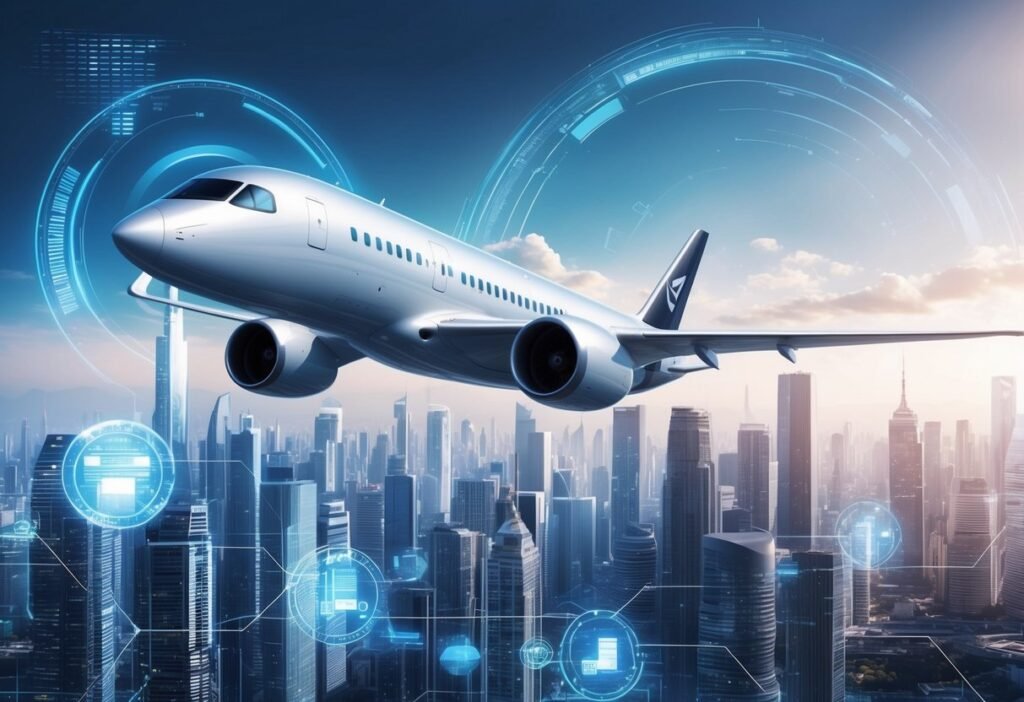
The digital age has brought major changes to aviation. New technologies are transforming aircraft, airports, and air traffic control systems. These advances aim to make flying safer, more efficient, and more sustainable.
The Role of Digital Technology
Digital innovations are reshaping aviation in many ways. Aircraft now use advanced electronics and computer systems for navigation, communication, and flight control. These systems allow for more precise flying and better fuel efficiency.
In airports, digital tools help manage passenger flow and security screening. Self-service kiosks and biometric scanners speed up check-in and boarding processes.
Air traffic control is also going digital. New systems use satellite technology and data sharing to track planes more accurately. This allows for safer and more efficient use of airspace.
Artificial intelligence and big data analytics are improving maintenance and operations. Airlines can predict issues before they cause delays or safety problems.
Hypersonic and Space Exploration
Aerospace technology is pushing the boundaries of speed and altitude. Hypersonic aircraft, which fly over 5 times the speed of sound, are in development. These planes could drastically cut long-distance travel times.
Space exploration is becoming more accessible. Private companies are launching satellites and even human passengers into orbit. Reusable rockets are making space flight more affordable.
New materials and propulsion systems are enabling these advances. Lightweight composites and advanced engines can withstand extreme conditions.
Digital tools also play a key role in space missions. Powerful computers simulate flight conditions and control spacecraft remotely.
The Airline Industry and Economy
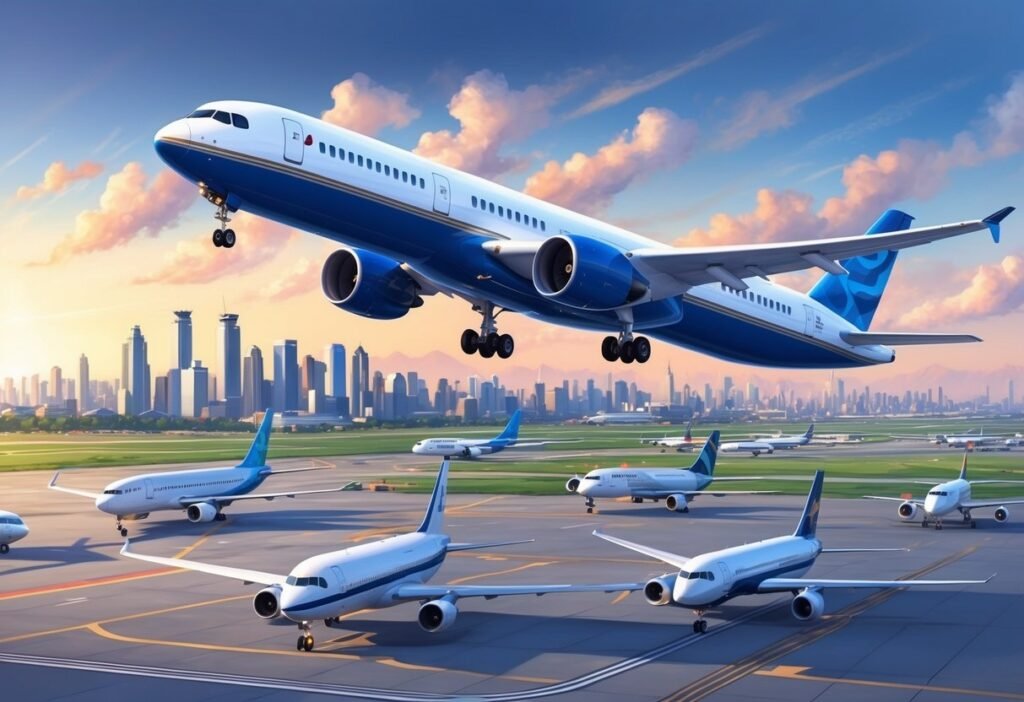
The airline industry is a key driver of economic growth and global trade. It connects businesses, people, and markets across the world. Airlines create jobs and facilitate commerce on a massive scale.
The Business of Airlines
Airlines operate in a complex and competitive environment. They face high costs for fuel, labor, and aircraft. Profit margins in the industry are often low, despite growing passenger numbers.
Airlines must balance many factors to succeed. These include:
- Route planning
- Ticket pricing
- Fleet management
- Customer service
The industry is sensitive to economic cycles. During downturns, business and leisure travel often decrease. This can lead to financial struggles for airlines.
Airlines also deal with strict regulations. Safety standards, environmental rules, and labor laws all impact operations. Adapting to new rules can be costly but is essential for staying in business.
The Impact of Aviation on Global Trade
Aviation plays a crucial role in international trade. It enables the rapid movement of goods and people across borders. This speed is vital for many industries.
Key benefits of air transport for trade include:
- Fast delivery of high-value goods
- Access to global markets for businesses
- Support for just-in-time manufacturing
- Boost to tourism and hospitality sectors
The industry contributes significantly to global GDP. It creates millions of jobs directly and indirectly. Airlines connect remote areas to the global economy, spurring development.
Air cargo is especially important for perishable goods and emergency supplies. It allows for quick responses to market demands and crises around the world.
Future Outlook in Aviation
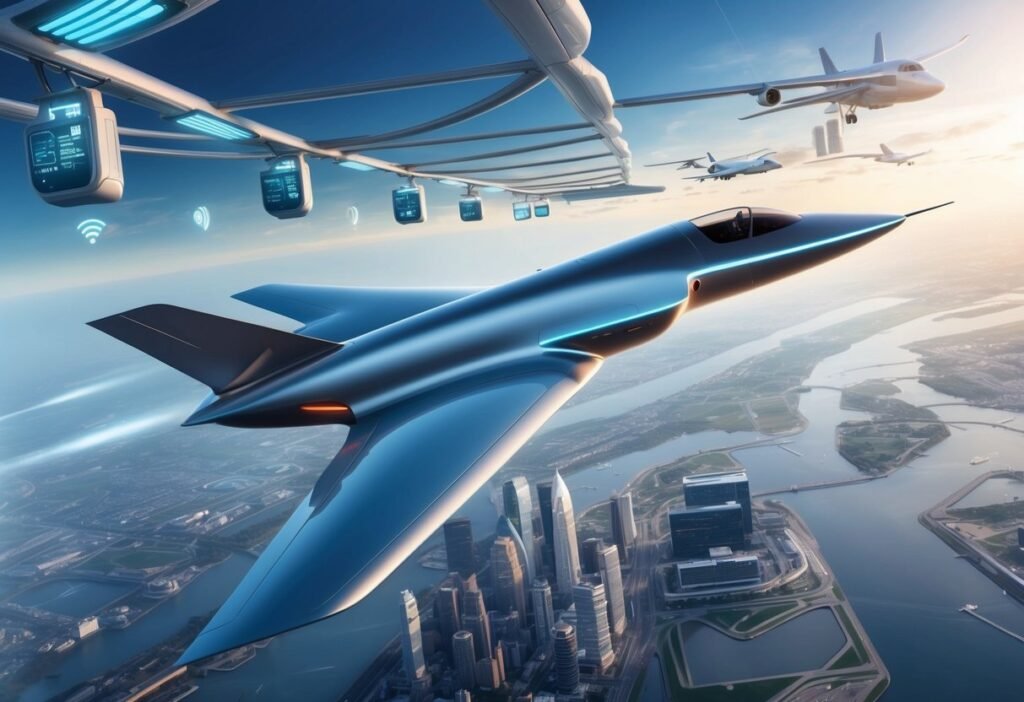
The aviation industry is poised for significant changes in the coming years. New technologies and environmental concerns will shape how we fly and design aircraft. These advancements aim to make air travel more sustainable and efficient.
Environmental Considerations
Sustainability issues will dominate the future of aviation. Airlines are working to reduce their carbon footprint through several methods:
• Sustainable aviation fuels made from renewable sources
• More fuel-efficient aircraft designs
• Improved air traffic management to reduce fuel burn
Electric and hydrogen-powered planes are being developed for short-haul flights. These promise zero direct emissions. Carbon offsetting programs are also becoming more common among airlines.
Noise pollution is another key concern. New aircraft designs aim to be quieter. Airports are implementing noise reduction measures too.
Next-Generation Innovations
Advanced technologies will transform air travel. Some exciting developments include:
• Supersonic passenger jets that can halve flight times
• Artificial intelligence to optimize flight routes and enhance safety
• Autonomous aircraft for cargo and eventually passengers
• Virtual and augmented reality to improve pilot training and passenger experiences
Biometric technology will speed up airport processes. Facial recognition and fingerprint scanning may replace traditional boarding passes.
Urban air mobility is set to take off. Electric vertical takeoff and landing (eVTOL) aircraft could provide air taxi services in cities. This may help reduce ground traffic congestion.

